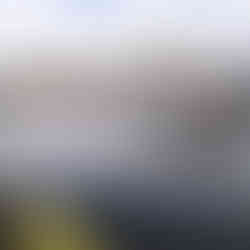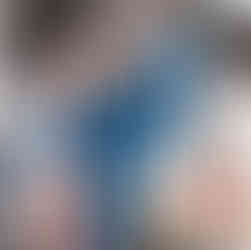Finland: What is award-worthy about Lahti?
- Wibke Helfrich
- 6. Feb. 2023
- 4 Min. Lesezeit
Aktualisiert: 19. Jan. 2024
Finland is regularly voted the happiest place in the world ...

... and especially when it comes to the beautiful landscape,
I can fully understand the happiness!
What was a little surprising - at first glance - was that the Lathi region has been showered with awards over the last few years:
In 2021, Lahti was named the Green Capital of Europe.
In February 2022, the region was voted among the 10 best European destinations in a competition organised by the travel website "European Best Destinations".
And to top it off, the news channel CNN recommended Lahti as one of the best "Places to visit 2022".
And not to forget, the local whiskey distillery Teerenpeli was elevated to alcohol heaven as the best "Worldwide Whisky Producer"!
Why all the honour for this rather unassuming town?
I ask myself and go on a local search: The Lahti region is less than an hour by train or car from Helsinki airport and is the southernmost part of the Finnish Lake District. Lahti, the centre of this area, is situated on Lake Vesijärvi, which is the southern tip of Finland's second largest lake system, Lake Päijänne.
This lake has - already many years ago - contributed to the rethinking. At that time, the lake was heavily polluted and the air was polluted by coal and industry. That was the time for change and the cornerstone for the many awards of today: since the region said goodbye to coal as a fuel source and offered its citizens free tickets and food as a reward for their environmentally friendly behaviour, the city became "green". Meanwhile, the drinking water is so clean that it has been certified by UNESCO (another award) as "the best drinking water in the world".
Click on the first picture to start the photo gallery:
That's great and impressive, but does that make Lahti an interesting destination?
What I found most amusing about Lahti City was the swimming pool below the ski jump. Where in winter ski jumpers plunge into the depths, in summer children splash around. OK, maybe I'm just a culture vulture. Of course, the Sibelius Concert Hall, built entirely of wood, is also famous. In my defence, I must say that it was closed during my visit.
What is special about this region (at least for me), like everywhere else in Finland - except perhaps Helsinki - is the surrounding countryside and thus nature.
Parts of the lake landscape belong to the Päijänne National Park.

Pulkkilanharju Esker (something like a small ridge peeking out of the water), which cuts through Lake Päijänne, is one of the most famous in the UNESCO Global Geopark Salpausselkä. The narrow, 8 km long island is partly part of the Päijänne National Park, which protects the valuable archipelago landscape of Finland's second largest lake. There is a good panoramic view from the connecting bridge at Karisalmi.
Kelvenne is one of Finland's largest and most impressive esker islands.
Kelvenne, an uninhabited island accessible only by boat, is the centrepiece of Päijänne National Park. It is one of Finland's largest and most impressive esker islands, formed during the last ice age. A hiking trail (approx. 9 km) leads across Kelvenne Island, from Kirkkosalmi to Likolahti. The trail is mostly easy hiking. In summer, Kelvenne is served by passenger boats and water taxis: www.nationalparks.fi/en/paijannenp/services/partners.
Besides kayaking, boating, hiking and fishing, there is one thing that should never be missing from a typical day's holiday in Finland:
A traditional Finnish sauna with a bath in the lake.
Speaking of saunas, I meet Maaria Alen at the accommodation by Lake Lehmonkärki. Maria is a kind of sauna shaman - what sounds a bit crazy to some is the oldest tradition in Finland to her:

the Finnish sauna!
She says: "Finnish saunas have been around for 2000 years. In the past, everything took place here: from giving birth to washing a dead, because the sauna was the most hygienic place back then due to the heat."
Traditionally, firewood is used to heat the sauna, and the infusion is pure water in which birch twigs may have been stored beforehand. Maria gently strokes me with these after a sauna session and sings me an old song to give me strength and inner peace. Afterwards, she sends me to cool off in the ice-cold lake. Wellness in Finnish doesn't need any frills to relax. Here, the endless pine forests, the countless lakes and the deeply relaxed people are enough.
Information on Päijänne National Park:
Food:
I found the food in the Kokka restaurant in the harbour of Lhati really unusually delicious.
https://bistrokokka.fi/ruokalista/ (unfortunately only in Finnish)

Sleeping:
Lehmonkärki rents out various holiday homes by the lake. The mirror houses directly by the sea are particularly impressive. The walls of the accommodation rooms are made of full-height mirrored glass, and the accommodation buildings are built on the pillar structure of the lake. When you enter the room, a magnificent view of Lake Päijänne opens up to you. Here you can also book a wide range of additional programmes: Fishing, hiking, boating, SUP etc.
There are also several saunas right by the lake.
Sauna experience:
Guided forest walk and sauna experience, body scrubs and foot baths, sauna hat, gentle infusions, organic soap and natural shampoo, refreshments and snacks during the sauna. 372,00 € for 4 persons
Maaria Alen Tel: +358 40 7192 848, www.travellamo.fi

























